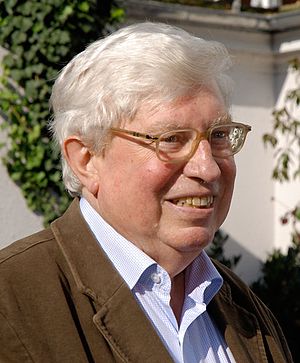Gerhard Ertl
Gerhard Ertl (born 10 October 1936) is a German physicist in the Department of Physical Chemistry of the Fritz Haber Institute of the MPG . He was born on 10 October 1936 in Stuttgart, Germany. Professor Ertl won the Nobel prize for Chemistry in 2007.
Ertl’s research laid the foundation of modern surface chemistry, which has helped explain how fuel cells produce energy without pollution, how catalytic converters clean up car exhausts and even why iron rusts, the Royal Swedish Academy of Sciences said.
His work has paved the way for development of cleaner energy sources and will guide the development of fuel cells, said Astrid Graslund, secretary of the Nobel Committee for Chemistry.
The Nobel academy said Ertl provided a detailed description of how chemical reactions take place on surfaces. His findings applied in both academic studies and industrial development, the academy said. “Surface chemistry can even explain the destruction of the ozone layer, as vital steps in the reaction actually take place on the surfaces of small crystals of ice in the stratosphere,” the award citation reads.[1][2]
Personal life
Ertl and his wife Barbara have two children and several grandchildren. His hobbies include playing the piano and also playing with his cats.
Publications
Professor Ertl is an editor of the Handbook of Heterogeneous Catalysis
Education
Professor Ertl studied physics at the Technical University of Stuttgart from 1955 to 1957. He studied at the University of Paris from 1957 to 1958 and then at Ludwig Maximillians University in Munich from 1958 to 1959. He returned to the Technical University of Stuttgart where he got a diplom of physics in 1961. Then he studied at the Technical University of Munich and got a PhD in 1965.
Academic work
Work
After getting his PhD, he stayed in Munich as an assistant and a lecturer between 1965 and 1968. Then, he moved to the Technical University of Hannover where he worked as Professor and Director from 1968 to 1973. In 1973, Professor Ertl returned to the Ludwig Maximilian University of Munich to work as a professor at the Institute of Physical Chemistry. He worked there until 1986 and during this time was a regular visitor to the California Institute of Technology, the University of Wisconsin-Milwaukee and the University of California, in Berkeley where he worked as a visiting professor. In 1986, he became professor at the Free University of Berlin and the Technical University of Berlin. He was director at the Fritz Haber Institute of the MPG from 1986 and was also a professor at the Humboldt University of Berlin from 1996. Professor Ertl retired in 2004.
Studies
Professor Ertl studied the molecules of ammonia, iron, carbon monoxide and palladium to help make modern catalytic converters. He studied platinum to learn about its atoms.
Professor Ertl helped to develop new ways of using microscopes. One was called low-energy electron diffraction (LEED) used at the beginning of his career and later he worked on ultraviolet photoelectron spectroscopy (UPS) and scanning tunneling microscope (STM).
Awards
Professor Ertl and Gabor A. Somorjai won the Wolf Prize for Chemistry in 1998 for outstanding results in surface science and for discovering how crystals react to experiments.
Professor Ertl was awarded the Nobel prize for chemistry in 2007 for more studies of surface science.
References
- ↑ German receives chemistry Nobel. Associated Press. (18-10-2007)
- ↑ Royal Swedish Academy of Sciences (10-10-2007). The Nobel Prize in Chemistry 2007. Press release.
Other websites
- 8 The Wolf Foundation Prize[dead link] in Chemistry. Wolf Foundation. (10-10-2007)
- Associated Press. (10-10-2007) Nobel for ozone layer scientist Archived 2008-03-09 at the Wayback Machine. CNN. (10-10-2007)
- Profile: Nobel prize the perfect birthday present for Ertl Archived 2007-10-12 at the Wayback Machine. Deutsche Presse-Agentur. (10-10-2007)
- Gerhard Ertl Archived 2009-05-14 at the Library of Congress Web Archives
- The Wolf Prize in Chemistry in 1998 Archived 2012-02-12 at the Wayback Machine
- Publications by Gerhard Ertl Archived 2007-10-12 at the Wayback Machine
